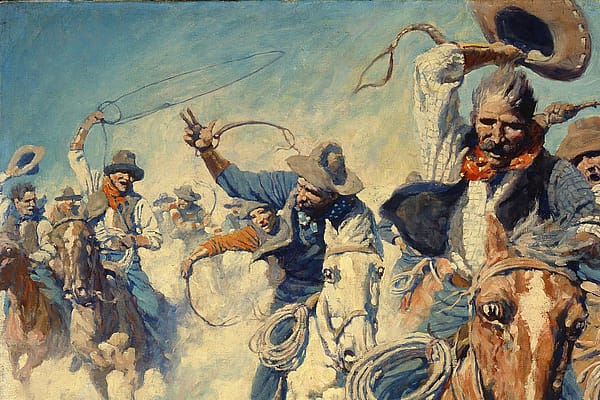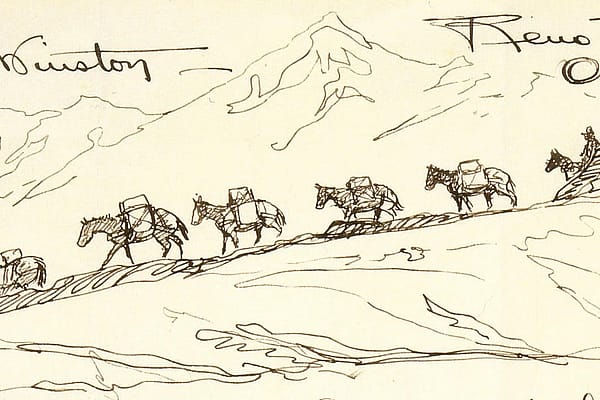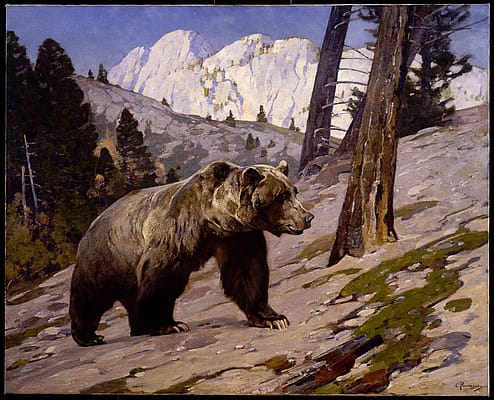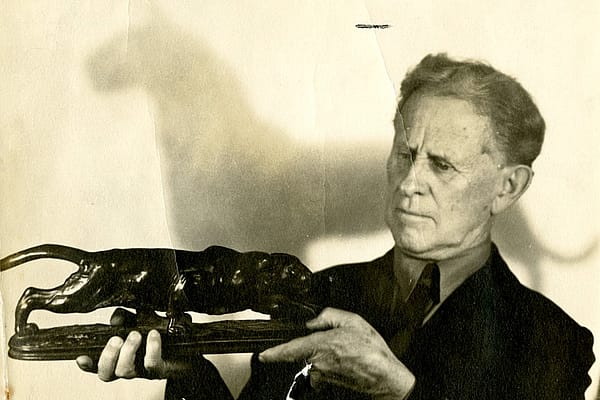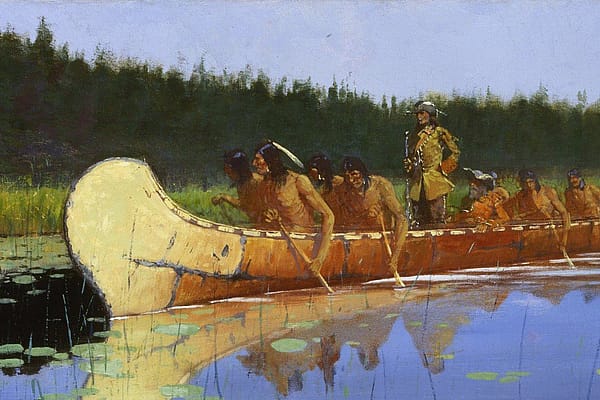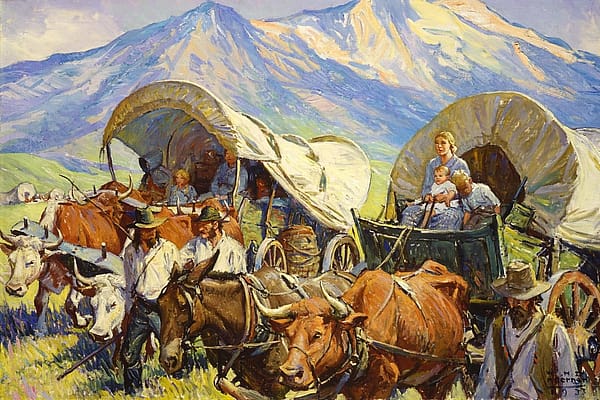
Art and Exploration of the American West: The Scientific Journey of Karl Bodmer
During the course of the nineteenth century, government officials, scientists, and artists traveled to the American West in search of land, resources, and the best overland route for westward expansion. On occasion, the purpose of these journeys was the scientific exploration of plants and animals or the recording of encounters with the West’s Native people.
Prince Maximilian, a German scientist, understood the difficulties and time commitment involved in such expeditions. Prompted by his successful journey to Brazil, he headed to the American West in 1832. Swiss artist Karl Bodmer accompanied Maximilian in what would be a two-year exploration of the Upper Missouri River. Bodmer’s task was to record everything he encountered, and with an observant eye, he depicted his subjects with exquisite detail. Bodmer sketched plants, animals, American Indians, and the landscape.
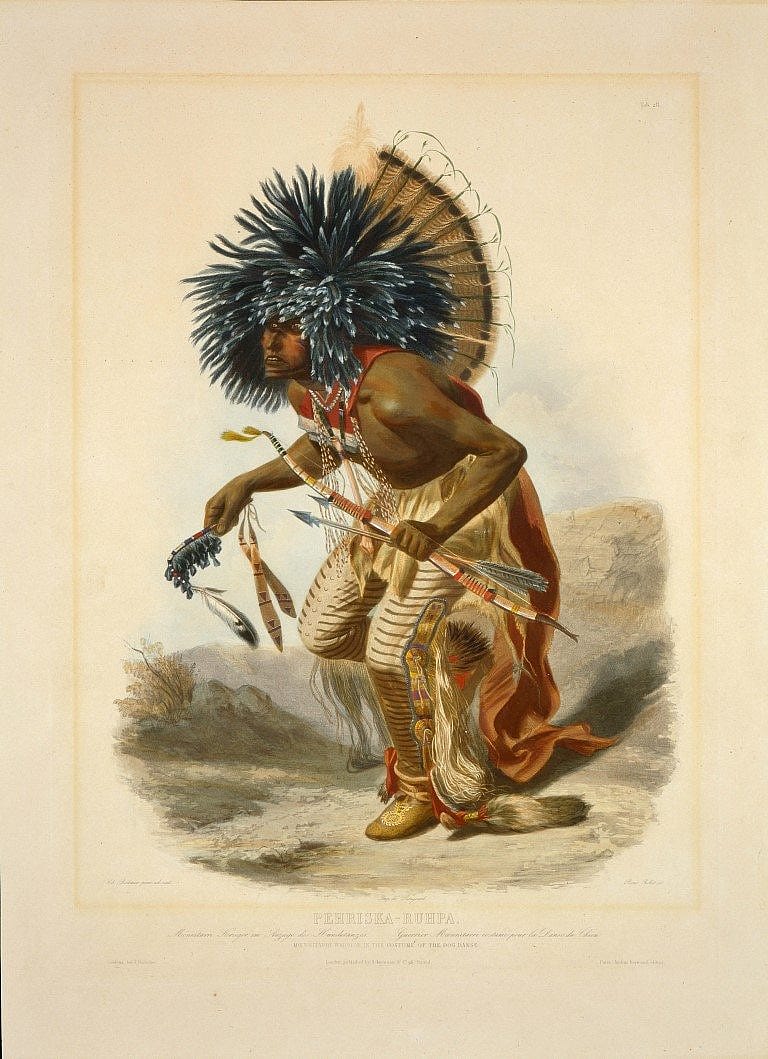
Upon returning to Europe, Maximilian’s and Bodmer’s findings were published in an illustrated two-volume tome, Travels in the Interior of North American 1832 to 1834. Over a nine-year period (1834-1843) following the release of the publication, Bodmer produced five editions of etchings based on his book illustrations.
Pehriska-Ruhpa and Mato-Tope, A Mandan Chief are two of Bodmer’s colored etchings inspired by his 1832 expedition currently on display in the Whitney Western Art Museum.
Pehriska-Ruhpa is one of Bodmer’s most stunning portraits. Bodmer depicted Pehriska-Ruhpa wearing ceremonial regalia including a headdress made of magpie tail feathers and a wild turkey fan with horsehair attached to the shafts of the turkey feathers. Pehriska-Ruhpa carries a rattle attached to a beaded staff in one hand, and in the other, he holds a bow and arrow.
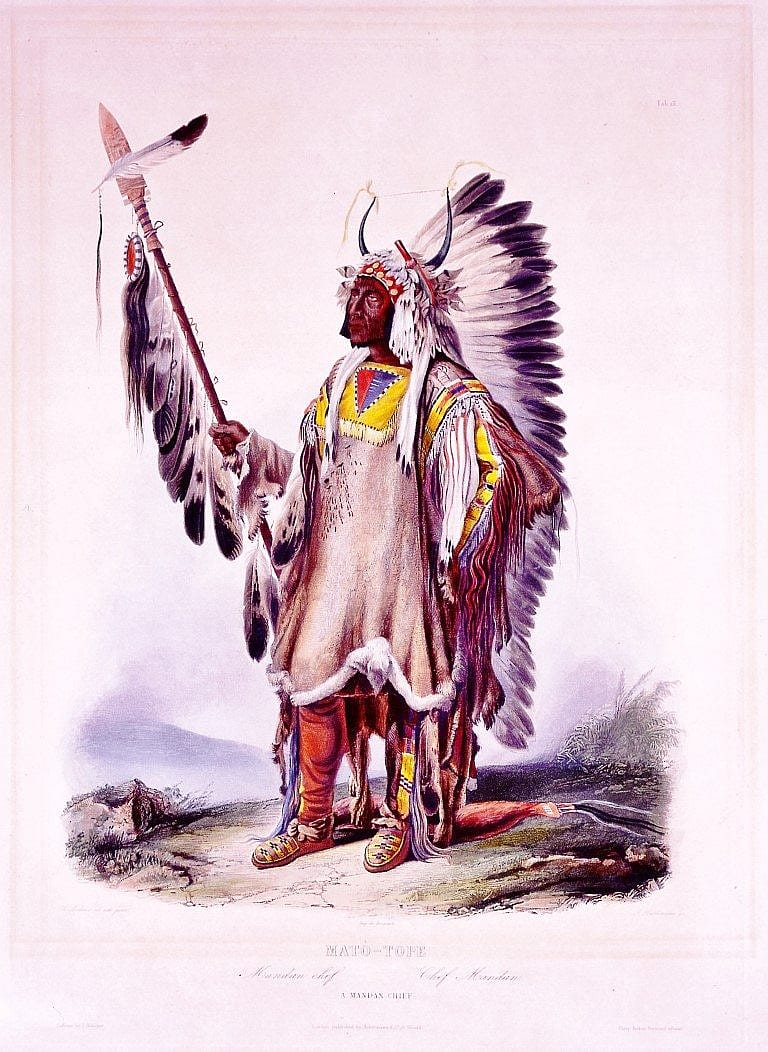
Mato-Tope features a Mandan chief whose regal countenance bespeaks his authority and power. His shirt is made of bighorn sheepskin trimmed with ermine tails, locks of hair, and strips of quillwork. Mato-Tope’s headdress includes eagle feathers, which often signified wartime coups or membership in a men’s warrior society. He holds a lance decorated with feathers and an enemy’s scalp.
The 1832 expedition would establish Bodmer as the first European painter to make an extensive visual record of the western American landscape and American Indian cultures. The complete collection of Maximilian and Bodmer’s expedition, including sketches, watercolors and journals, is housed at the Joslyn Art Museum in Omaha, Nebraska.
Bibliography:
_____. “An Illustrated Expedition of North America: Bodmer and Maximilian in the American West.” National Agricultural Library. Last modified October 3, 2016. https://specialcollections.nal.usda.gov/bodmer-exhibit.
Goosman, Mildred. “Karl Bodmer: Earliest Painter in Montana.” Montana: The Magazine of Western History 20, no. 3 (Summer 1970): 36-41.
_____. “Life on the Upper Missouri: The Art of Karl Bodmer.” Montana: The Magazine of Western History 50, no. 2 (Summer 2000): 74-75.
Written By
Nicole Todd
Nicole Todd was formerly the Curatorial Assistant for the Whitney Western Art Museum. She graduated from the University of Oklahoma, with bachelor’s degrees in Zoology and Art History, and a master’s degree in Art History, with a focus on western American art and a specialization in Will James’s art. As Curatorial Assistant, Nicole engaged in art historical research, supported educational programming, answered public inquiries, and contributed to the Whitney’s online presence.
